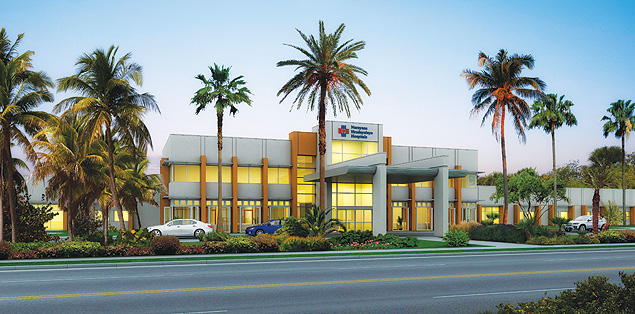Out of sight from the East End main road, behind a rise and down a dusty access road, lies a quickly growing series of concrete and metal structures.
By March next year, if everything goes according to plan, these structures will be home to Health City Cayman Islands, a medical tourism hospital with 140 beds, offering cardiac and orthopaedic care to patients from overseas.
The US$2 billion facility is the brainchild of Indian cardiologist Dr. Devi Shetty who is on a mission to make surgeries that the common man can hardly afford accessible to everyone.
The site is rapidly taking shape as Cayman’s first medical tourism hospital, which politicians and businessmen have touted as likely to become a third pillar in Cayman’s economy, alongside general tourism and financial services.
Initial reports that Dr. Shetty was looking at Cayman as home to his latest venture began emerging in late 2009. A deal with the Cayman Islands Government was signed in April 2010.
The developers of the project, who include local businessmen Gene Thompson and Harry Chandi, say it aims to eventually roll out to become a 2,000-bed hospital over the next 15 years, offering services at considerably lower prices than they are available in the United States. While initially it appeared Dr. Shetty would be looking mainly to the US market for medical tourism patients, he announced later he anticipated patients would also come from the Caribbean and Latin America.
The cardiologist, who was Mother Theresa’s doctor, has teamed up with local partners Gene Thompson and Harry Chandi.
At Dr. Shetty’s 1,000–bed Narayana Hrudayalaya heart hospital in Bangalore in southern India, patients undergo heart surgeries for as little as US$2,000. In the United States, those operations cost between US$20,000 and US$100,000.
The project in Cayman is privately funded, but the Cayman Islands Government offered a raft of concessions and waivers to make Cayman as attractive a proposition as possible for the medical facility entrepreneur, who had been also looking as other possible locations for his hospital.
The terms of the deal called for changes to or introduction of legislation, including the Health Practice Law, enabling medical staff trained in India and other overseas countries to practise in Cayman; the Tax Concessions (Amendment) Law to exempt companies from potential future taxes; the Medical Negligence (Non-Economic Damages) (Amendment) Law, which caps pain and suffering damages awarded in medical malpractice cases to $500,000; and the Human Tissue Transplant Law, which allows human organ and tissue donations and transplants to be done in Cayman.
Under the agreement, Caymanians referred from the Health Services Authority will get a 20 per cent discount on surgeries at the hospital; work permit fees for medical personnel employed at the new hospital will cost between 15 per cent and 30 per cent less than normal; and patients and their relatives will be granted a minimum of three months visitors’ visa upon arrival in Cayman.
It also gives the company a 20-year waiver of all taxes on profit, income, gains and appreciations, regardless of whether the law changes to introduce taxes on those.
The company will be exempted from paying customs or import duty on the first US$800 million it spends on equipment and medical supplies. Once that US$800 million has been exhausted, for the 15 years following that, its duty payments on equipment and supplies will not exceed 5 per cent of the cost. In the 15 years following that period, its duty payment will not exceed 10 per cent of the cost of equipment and supplies.
Also, for the first 50 years of operation, it will not pay duty on any life-saving equipment.
The site became the first in Cayman to be granted planned area development status. The Central Planning Authority granted the approval to three separate PADs in January this year. PADs are projects covering more than 40 acres, with three or more distinct uses, which are master planned as one development.
Cayman’s then premier McKeeva Bush inked the deal with Dr. Shetty in April 2010. Mr. Bush had seen first hand how one of Dr. Shetty’s hospitals operated when he travelled to Bangalore to be at guest at the inauguration of one of the entrepreneur’s new hospitals.
Dr. Shetty broke ground at the High Rock site in September last year. The first concrete was poured in February and by mid-April, the walls of the four buildings in the first phase had been erected, roofs were already in place on some of the structures and the construction work was ahead of schedule, according to construction manager Ryan Smith. Once fully operational, the hospital will offer cancer treatments, open heart and bypass surgeries, organ transplants, angioplasty and orthopaedics, Dr. Shetty has said.
The US$2 billion facility is the brainchild of Indian cardiologist Dr. Devi Shetty who is on a mission to make surgeries that the common man can hardly afford accessible to everyone.
source: http://www.compasscayman.com / Cay Compass.com / Home> Article / by Norma Connolly norma@cfp.ky / April 30th, 2013


